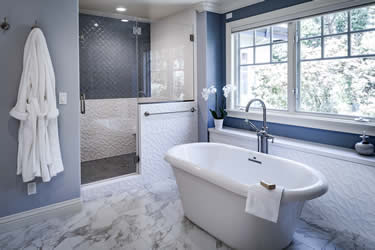手机点击右上角 ![]() 标识,打开下拉菜单
标识,打开下拉菜单

现代的给排水行业几乎就是一个奇迹:只需要简单地转动旋钮,或者按下手柄,您手上身上的细菌病菌就会被冲刷到下水道里,您身上的皮屑污垢也会被清洗干净,您不但能够保持浴室干净卫生整洁,您也能够保持全身洁净卫生健康。现代给排水行业所取得的成就被公认为有效促进人类的卫生健康,有效避免和消除污染与疾病。
Modern plumbing is nothing short of a miracle: With a simple turn of a knob or press of a lever, germs from your hands and body are sent down the drain, or your body’s wastes are flushed away, leaving you and your bathroom clean and healthy. Modern plumbing advances have long been credited with boosting human hygiene and eliminating contamination and disease.
史前时期的给排水
Prehistoric Plumbing
公元前4000年至3000年 - 第一个水管
4000-3000 B.C. - First water pipes

许多历史学家认为,大约在公元前3500年左右,位于现在的巴基斯坦和印度的摩亨佐-达罗镇,是下水道的诞生地。印度河流域文明,也称为哈拉帕文明,还有许多其他发明,如标准重量和测量体系,以及红铜、青铜和锡等金属的制造生产。在这个地区,各个家庭通过砖砌管道从水井里取水。污水则从房间内排放到主要街道的封闭有盖的排水沟里。历史学家认为,对于这个文明来说,清洁卫生很重要,因为即使是最小的房子也都与公共排水系统相连接。
Many historians credit the town of Mohenjo-Daro, in modern-day Pakistan and India, as being the birthplace of sewers around 3500 B.C. The Indus River Valley Civilization, also called the Harappan Civilization, was known for many other innovations, as well, such as a system of standard weights and measures, and the production of metals such as copper, bronze, and tin. In this area, individual homes drew water from wells through masonry conduits. Wastewater was sent from the houses to covered drains that lined the main streets. Historians believe that cleanliness important to this civilization, because even the smallest houses were connected to the public drainage system.
公元前2500年 - 第一个铜管
2500 B.C. - First copper pipes

埃及人开发了早期的管道系统,并且发明了铜合金制造技术。由于尼罗河水位太高时,洪水泛滥淹没庄稼;水位太低时,造成田地缺水干旱,所以埃及的铜匠们在他们的灌溉系统中创造并使用铜工具和铜管道,用来控制调节从尼罗河流来的河水。
The Egyptians developed early piping systems, having devised techniques to create copper alloys. Their smiths created and used copper tools and pipes for their irrigation systems to control water flowing from the Nile River, which flooded their crops when it ran too high, and left their fields parched when it ran too low.

1994年,考古学家在挖掘一座金字塔墓葬群遗址时,发现一个铜管道和排水系统。估计这座金字塔大约有4500年左右的历史,可以追溯到公元前2600至2500年左右,埃及人认为人死后依然可以享受与活人一样的奢侈品,可见管道在当时也算是奢侈品。
In 1994, archaeologists excavating the remains of a pyramid’s funerary complex discovered a copper plumbing and drainage system. The pyramid itself was estimated to be about 4,500 years old, dating back to around 2600-2500 B.C. Egyptians believed that the dead enjoyed the same luxuries as the living, which explains the plumbing.
公元前2000年至1000年 - 第一个排水与排污系统
2000-1,000 B.C. - First drainage and sewage systems
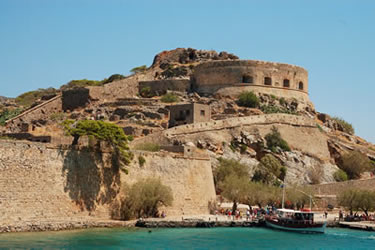
公元前1700至1500年左右,古代工程师利用古希腊克里特岛陡峭阶梯状地形,创造了一个具有厕所、水槽和窨井的排水系统。这个系统由带有完美承插口的赤陶管道和能够防止沉积物淤积的锥形管道组成。这是那个时代最先进的排水系统。在女王的浴室内,考古学家发现了一个5英尺(152公分)长的浴缸,显然是靠人工注水和排水。水倒入地板上的一个孔洞里,最终排入古希腊凯瑞托河。这个浴室还被认为拥有世界上最早的“冲水”马桶,用隔板进行间隔,采用雨水或水箱内的水进行冲刷。
Around 1700-1500 B.C., ancient engineers took advantage of the steep grade of the land on the Greek island of Crete to create a drainage system with lavatories, sinks, and manholes. The system consisted of terra cotta pipes with perfect joint sockets, and the pipes were tapered to prevent sediment from building up. It was the most advanced drainage system of its time. Inside a queen’s bathroom from the time, archaeologists discovered a 5-foot-long bathtub that apparently was filled and drained by hand. The water was emptied into a cavity in the floor and, eventually, into the Kairatos River. Also, the bathroom contained what is believed to have been the world’s earliest “flushing” water closet, screened off by partitions and flushed by rainwater or water from cisterns.
公元前710年 - 世界上最早的淋浴器(类似)
710 B.C. - The world’s first shower (kind of)
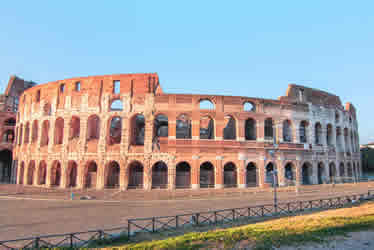
在罗马帝国时期,大约在公元前500年到公元476年之间,基本的给排水系统演变成庞大的水系统,并出现了我们今天使用的水槽、淋浴器、浴缸、座便器和排水管的雏形。罗马人建造了从农村把水输送到罗马的水渠。在那个时候,这些水渠每天输送新鲜水达到12亿公升,长度长达57英里(91.7公里)。水通过水渠后,储存在水箱内,然后通过管道分送到浴室、喷泉和厕所。富裕的罗马人还有热水和冷水,以及污水处理系统。进一步的发展,出现了公共浴室和供水系统。
During the time of the Roman Empire, roughly between 500 BC and AD 476, basic plumbing structures evolved into extensive systems that carried water and are regarded as models for the sinks, showers, tubs, toilets, and drains we use today. The Romans built aqueducts to transport water from the countryside into Rome. At one point, these aqueducts carried about 1.2 billion liters of freshwater 57 miles every day. After the water passed through the aqueducts, it was collected in tanks and distributed through tunnels of pipes to baths, fountains, and toilets. Wealthy Romans had hot and cold water, as well as a sewage system. Public bathrooms and water supplies would come later, as further advancements were made.
公元前200年左右,发生了一个致命的错误,罗马工程师采用铅管道取代原有的管道系统。这种方法极大改善了水输入城市的方式。但是,罗马人不知道的是,铅管道含有能够混入水中的毒素,因此导致无数人死于铅中毒。铅含量超过安全值的10倍以上,儿童和孕妇受到最大的伤害。学者们仍然在估测,当时罗马人的人口的总体健康状况和人口规模的下降对于罗马帝国的灭亡的影响有多大。
A fatal misstep took place around 200 B.C. Roman engineers used lead piping to replace the system already in place. This dramatically improved the way that water was carried into the city. Unbeknownst to the Romans, however, lead piping contained toxins that got into the water, causing numerous deaths from lead poisoning. Lead levels rose to 10 times the amount that’s safe to consume. Children and pregnant women suffered the most, with a rise of infant deaths and miscarriages. Scholars still speculate on how much the resulting decline in the size and general health of Rome’s population might have contributed to the downfall of the empire.
现代给排水行业的前身
Precursors to Modern Plumbing
1596年 - 第一个冲水马桶(又名‘约翰’)
1596 - First flushing toilet (aka ‘The John’)

很快来到1596年,大约500年前,当时约翰•哈灵顿爵士,伊丽莎白一世女王的教子,发明了第一个冲水马桶。由于讲了一些荒唐的故事,哈灵顿被驱逐出宫廷,随后他组建了家庭,并发明制作了第一个冲水马桶。后来,伊丽莎白女王原谅了他,并看望她的教子,对他的发明印象深刻,于是命令他在里士满宫内也造一个冲水马桶……从那以后,浴室行业人员就把冲水马桶的发明人称为“约翰”。
Fast-forward to 1596, about 500 years ago, when Sir John Harington, godson of Queen Elizabeth I, created the first flushing toilet. Harington, who had been banished from the royal court for telling risque stories, built a home and created the first flushing toilet. After forgiving him, Elizabeth visited her godson and was so impressed by his invention that she ordered him to build one for her at Richmond Palace ... and bathroomgoers ever since have invoked the inventor’s name in “the John”.
十七世纪中期 - 美国第一个城市规模的水系统
Mid-1600s - America’s first citywide water system
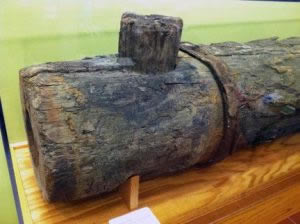
1652年,美国波士顿市建成了第一个城市规模的水系统。早期的定居者聚集在一起,成立了一家公司建造“Conduit”(管道),一种用于消防灭火及室内使用的自来水系统。这个系统的大部分排气管道是采用镂空的树木原木制成。
In 1652, the first city water system was built in Boston. Early settlers came together and formed a corporation to build the “Conduit”, a waterworks system for fighting fires as well as for domestic use. Most of the system’s vent piping was made of hollowed-out tree logs.
1664年 - 第一个主水管道
1664 - First water main

法国国王路易十四下令建造一条主水管道,从塞纳河边的马尔利泵站到凡尔赛宫,绵延15英里(24公里)。这条主供水管道一直铺到附近的城镇,为宫殿花园和喷泉提供供水管道服务超过330年。
King Louis XIV of France ordered construction of a cast-iron water main that extended 15 miles from a pumping station at Marly-on-Seine to the palace at Versailles. The main supplied water to the nearby town, and the piping served the palace gardens and fountains for more than 330 years.
1767年 - 第一个机械淋浴器
1767 - First mechanical shower
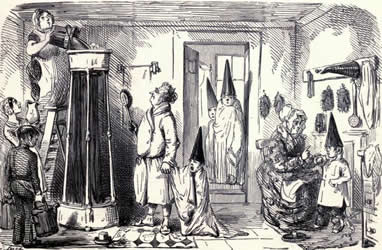
英国火炉和加热器制造商威廉•费萨姆发明了一个专利产品 - 世界上第一个机械淋浴器,被称为“英国摄政淋浴器”。它由一个大盆组成,淋浴者站着淋浴,水箱位于头顶上方,通过手泵将水从盆内向上抽水。一旦水汇集到头上水箱后,淋浴者就会拉一下一条链子,然后水就会倾泻而下,最后水再收集到盆里。收集后的水将在淋浴过程中一遍又一遍地重复使用。一开始,这种奇异的装置没有人要用,因为循环使用的水又脏又冷。在那个时候,热水澡已经很普遍了,看起来比这种脏水“淋浴”要舒服得多。后来,又经过几年的重大改进,包括热水器的发展,淋浴器才逐渐成为家庭标准配置。
English stove and heater manufacturer William Feetham created and patented the world’s first mechanical shower, known as the “English Regency shower.” It consisted of a large basin, where the bather would stand, and an overhead water tank that pumped water upward from the basin via a hand pump. Once the water was collected overhead, the bather would pull a chain, and the water would be dumped onto them, eventually collecting back in the basin. The water then would be reused over and over for the duration of the shower. In the beginning, no one wanted anything to do with this contraption; the recycled water was dirty and cold. By this time, hot baths were common and seemed a lot better than “showering” in soiled water. It would take several years and major improvements - including the development of the water heater - before the shower became a standard household feature.
1775年 - 现代座便器原型
1775 - Prototype for the modern toilet
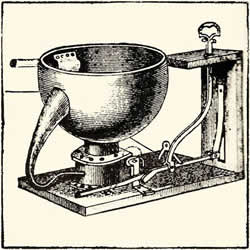
在约翰•哈林顿爵士发明第一个冲水马桶近200年后,苏格兰发明家亚历山大•卡明获得了第一个非常类似但经过改进的设备的专利,并增加了一些重要的附件。卡明对哈林顿的座便器进行了改进,这个座便器无法自动补充水箱里的水,也无法消除令人厌恶的气味。卡明的座便器雏形的特点是发明一个将进水阀与冲洗机构连接起来的装置,允许水箱里的水冲洗清空后能被重新补充。在座便器桶座下面,卡明安装了一个S形管道(或“S形存水弯”),用水组成一道密封,阻止下水道气体进入座便器。
Nearly 200 years after Sir John Harington invented the first flushing toilet, Scottish inventor Alexander Cumming received the first patent for a very similar - but improved - device, with a few crucial additions. Cumming improved on Harington’s toilet, which hadn’t been able refill on its own or eliminate the horrible smell. Cumming’s prototype featured a device that linked the water inlet valve to the flush mechanism, allowing the pan to be emptied and refilled. Below the bowl, Cumming installed an S-shaped pipe (or “S-trap”) that used water to create a seal, preventing sewer gas from entering the toilet.
1975年 - 第一个消防灭火水系统
1795 - First water system for firefighters

当纽约市的人口增长超过其给排水系统的处理能力时,纽约市设计了一个新的给排水系统网络,采用中心掏空的原木运输消防用水。这种装置使得消防员能够通过钻孔让“管道”穿过墙壁取水,然后在他们灭火后堵住这个钻出来的孔洞,从而产生了“火塞”一词
When New York City’s population outgrew its plumbing system, it devised a new network of hollow logs to transport water for firefighting. The setup allowed firemen to access water by drilling through the walls of the “pipes,” then plug the hole after they were finished - giving birth to the term “fireplug.”
19世纪的进展
19th-Century Advances
1804至1810年 - 美国第一个铸铁管道系统
1804-1810 - First cast-iron pipe system in America
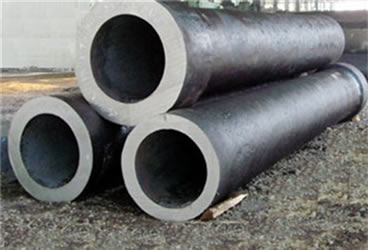
费城成为美国第一个从原木管道系统改为铸铁管道系统的城市。更耐用的铸铁管道系统使得费城居民能够更好地调节水压,效果比原先的木质管道系统好多了。
Philadelphia became the first U.S. city to switch from wooden log pipes to a cast-iron system. The more durable plumbing system allowed users to regulate water pressure far better than with wooden piping.
1815年 - 首次出现水可用性概念,首次采用的水安全措施
1815 - First water availability and safety measures

费城也是美国第一个将安全的、可随时使用的供水作为城市基础设施建设治理需要解决的问题的城市。费尔蒙水厂系统利用横跨舒尔基尔河的水坝和水轮取代了低效的蒸汽机系统。 这些水直接通过管道输送到付费用户的企业和家庭,并通过消防栓向任何有水桶的人提供免费水。
Philly was also the first U.S. city to approach a safe and readily available water supply as a municipal governance issue. The Fairmount Water Works system replaced its inefficient steam engine system with a dam and water wheels across the Schuylkill River. The water was piped directly to the businesses and homes of paying customers, and free water was provided via fire hydrants to anyone with a bucket.
1829年 - 第一家采用给排水系统的酒店
1829 - First hotel with plumbing
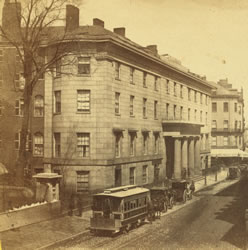
波士顿的特里蒙特酒店成为第一家为客人提供室内给排水系统的酒店。由建筑师艾赛亚•罗杰斯设计的特里蒙特酒店被认为是美国第一家现代化酒店。除了室内厕所和自来水,特里蒙特酒店还提供免费的肥皂,供客人方便使用。
The Tremont Hotel of Boston became the first hotel of its kind to offer indoor plumbing for guests. The Tremont, designed by architect Isaiah Rogers, is considered the first modern hotel in the United States. In addition to featuring indoor toilets and running water, it offered free soap for guests to use at their convenience.
1833年 - 白宫内的第一个给排水系统
1833 - First plumbing in the White House
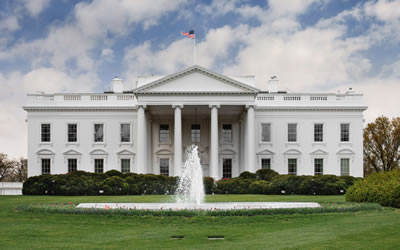
这很奇怪,但却是真的:一家豪华的酒店比白宫还早安装了给排水系统。在安德鲁•杰克逊担任总统之前,白宫用水一直是从邻近的财政部大楼的一口井中泵入到白宫内。而给排水系统直到1833年才在总统的住宅中被采用,那时,给排水系统也只限于在主楼上使用。直到20年后,在富兰克林•皮尔斯担任总统期间,二楼才看到了给排水系统。
It’s odd, but true: A fancy hotel installed plumbing before the White House did. Until Andrew Jackson’s presidency, water was pumped to the White House from a well at the neighboring Treasury Building. Plumbing wasn’t introduced at the presidential home until 1833 - and then, it was only available on the main floor. The second floor wouldn’t see plumbing until 20 years later, during the presidency of Franklin Pierce.
1835至1842年 - 第一座市政级的水库
1835-1842 - First municipal reservoir

1835年,纽约利用克罗顿河的水,开始为市中心曼哈顿建造第一座引水渡槽和水库系统。当1842年投入使用时,这个系统每天为城市居民提供约7200万美制加仑(2亿7千万公升)的淡水。
In 1835, New York began building its first aqueduct and reservoir system for midtown Manhattan, using water from the Croton River. When put into service in 1842, the system delivered city residents about 72 million gallons of fresh water a day.
1848年 - 英国国家公共安全法
1848 - National Public Health Act
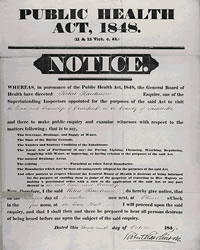
英国通过了《国家公共卫生法案》,其中包括关于水卫生和安全的规范,并成立了一个中央健康委员会,以应对几次严重的霍乱爆发。该法案有其缺陷,但也可以作为后来的公共安全法案的蓝图。它被公认为公共卫生史上最伟大的里程碑之一,现已被世界各国采纳和利用。
England passed the National Public Health Act - which included notes on water health and safety and established a Central Board of Health - in response to several severe outbreaks of cholera. The act had its flaws, but served as a blueprint for later public safety acts. Recognized as one of the greatest milestones in public health history, it has been adopted and adapted by countries all over the world.
1855年 - 美国第一个综合下水道系统
1855 - First comprehensive sewer system in America

在19世纪中期,芝加哥完成了伊利诺伊州和密歇根运河的建设,使芝加哥河倒流,这两个巨大的给排水系统工程有助于芝加哥发展成为美国全国贸易中心。然而,在同一时期,蓬勃发展的芝加哥市也因多次霍乱、伤寒和痢疾的爆发而失去了数千人的生命。 为了改善让市民生病的沼泽环境,芝加哥市工程师在道路上方铺设了污水管道,并覆盖上泥土,将街道垫高了8英尺(2.43米)以上,使芝加哥市从泥泞中升上来。到1855年,芝加哥已经建成了美国第一个全市范围的下水道系统。
In the mid-1800s, Chicago completed construction of the Illinois and Michigan Canal and reversed the flow of the Chicago River, two massive plumbing feats that helped transform the city into a national trade hub. During this same period, though, the burgeoning city also lost thousands of lives to multiple cholera, typhoid, and dysentery outbreaks. To eliminate the swampy conditions that kept making its citizens sick, city engineers laid sewer lines above the thoroughfares and covered them with dirt, elevating the streets by as much as 8 feet and literally raising the city out of the muck. By 1855, Chicago had built America’s first citywide sewer system.
1857年 - 第一个商用卫生纸
1857 - First commercially available toilet paper
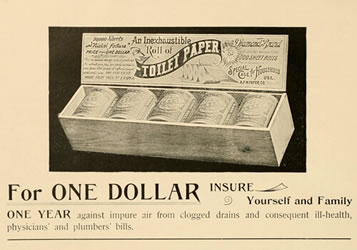
美国发明家约瑟夫•盖耶蒂开始销售由大麻和芦荟制成的“药用纸”。他为自己的发明感到骄傲,每张纸上都印有他名字的水印。这种厕纸以平板包装出售,并被宣传为“这个时代最需要的东西!”最近人们由于担忧新冠肺炎病毒隔离而囤积厕纸的现象,表明厕纸在世界各地的主要产品中是多么珍贵一种。
American inventor Joseph Gayetty began selling “medicated paper” made of hemp and aloe. He was so proud of his invention that each sheet carried a watermark of his name. The toilet paper was sold in packages of flat sheets and advertised as “the greatest necessity of the age!” The recent phenomenon of people hoarding toilet paper in anticipation of coronavirus quarantine shows how precious a staple it has become around the world.
19世纪70年代 - 第一个陶瓷冲水马桶 - 第一个热水器
1870s - First ceramic flushing toilet - and water heaters
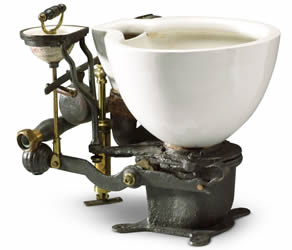
英国陶器制造商托马斯•威廉•特威福德发明了一体式陶瓷马桶。他是在从去世后的父亲托马斯•特威福德手中接管了特威福德公司几年后取得了这项创新性突破,他本人也是卫生洁具行业的先驱。大约在同一时间,热水器开始出现在小型建筑中,在烹饪、清洁、洗手和洗澡方面彻底改变了美国家庭。
British pottery manufacturer Thomas William Twyford invented the single-piece ceramic toilet. His breakthrough came a few years after he took over the Twyford company from his recently deceased father, Thomas Twyford, himself a pioneer in sanitary hygiene. Around the same time, water heaters began to appear in smaller buildings, revolutionizing the American home with immediate improvements in cooking, cleaning, handwashing, and bathing.
1891年 - 托马斯•克拉珀的真相和传说
1891 - The truth and myth of Thomas Crapper
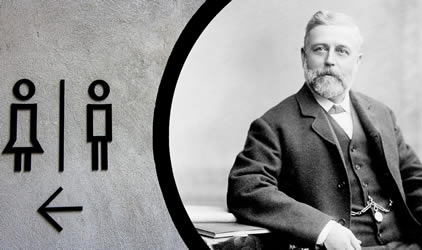
托马斯•克拉珀是一位成功的给排水和卫生洁具工程师。但是,与流行的传说相反,他没有发明冲水马桶 - 冲水马桶早在他出生之前就出现了。克拉珀之所以会被误认为是冲水马桶的发明人,是由于他在座便器方面的工作,他对浴室发展确实有很重要的历史贡献:事实上,他在1870年开设了世界上第一个浴室展览厅。
Thomas Crapper was a successful plumber and sanitation engineer. But, contrary to popular myth, he did not create the flushing toilet - which long predates his arrival on the scene. Crapper has been falsely credited with the invention thanks to his work on toilets, but his contributions to bathroom history were still significant: In fact, he opened the world’s first bathroom showroom in 1870.
当代发展
Contemporary Developments
20世纪30年代 - 第一部给排水标准法案
1930s - First standardized plumbing codes

在成为美国第31任总统之前,赫伯特•胡佛和是专为现代建筑商和给排水行业人员制定给排水标准规范的法案发起者之一,除他之外还有罗伊B.亨特博士。1921年,胡佛是一名工程师和商务部长,罗伊B.亨特博士则是20世纪20年代至40年代美国国家标准局给排水部的负责人。美国第一部全国给排水法案,以胡佛的名字命名为“胡佛法案”,1928年出版。亨特博士的这个杰作至今仍在美国给排水法案中引用。
Before he became the nation’s 31st president, Herbert Hoover was one of the fathers of modern standardized plumbing codes for builders and plumbers, along with Dr. Roy B. Hunter. Hoover was an engieer and Secretary of Commerce in 1921, and Dr. Roy B. Hunter was head of the plumbing division of the National Bureau of Standards in the 1920s through the 1940s. The nation’s first plumbing code, named the “Hoover Code” in Hoover’s honor, was published in 1928. Dr. Hunter’s work is still referenced in U.S. plumbing codes used today.
20世纪50年代 - 第一个非金属管道
1950s - First non-metallic pipes

1952年,美国开始使用塑料管道,以应对第二次世界大战后的金属短缺危机。三年后,美国铺设了第一条聚氯乙烯(PCV)水管。由于聚氯乙烯(PCV)等塑料管道稳定性相对较高,且成本较低,因此如今美国全国大多数给排水管道系统都是由PVC等塑料材料制成的。
Plastic piping was introduced in 1952 in the United States, in response to the shortage of metals after World War II. Three years later, the first polyvinyl chloride (PCV) water pipes were laid in the U.S. Most pipes for plumbing throughout the country today are made of PVC material, due to its relative stability and low cost.
1978年 - 第一部水资源保护法
1978 - First water conservation laws

美国加州通过了一项法律,规定座便器每次冲水时的水使用量不得超过3.5美制加仑(13公升)。以前,大多数座便器每次冲水至少要消耗6美制加仑(22公升)。根据2013年的一份报告,这个人口密集、容易干旱的州每年消耗约2.9万亿加仑的水用于城市生活和运营,座便器冲水占用水总数的28%到40%。
California adopted a law stipulating that toilets may use no more than 3.5 gpf (gallons per flush). Previously, most toilets consumed at least 6 gpf. The densely populated, drought-prone state consumed about 2.9 trillion gallons of water per year for urban uses, according to a 2013 report, and toilet flushing accounted for between 28% and 40% of that total.
1992年 - 美国能源政策法案
1992 - U.S. Energy Policy Act

《美国能源政策法案》降低了给排水系统中固定装置的水流量。该法案要求采用冲水量低的座便器,而每次冲水量超过1.6加仑水(6公升)的座便器则被列为超标座便器,不能违规使用。
The United States Energy Policy Act reduced water-flow rates into plumbing fixtures. This act mandated the introduction of low-flush toilets and outlawed toilets that flush more than 1.6 gallons of water.
2003年 - 第一个国际标准
2003 - First international standards

国际规范委员会的成立是为了确保全球所有的给排水工程项目都有统一严格的规范和标准供执行。这家非营利性委员会制定了在世界范围内适用的给排水产品种类结构规范和标准,适用于建造安全、可持续、负担得起和有弹性的建筑项目。
The International Code Council was formed to ensure a strictly enforced code and standard in all plumbing projects around the globe. The nonprofit council develops model codes and standards used worldwide to construct safe, sustainable, affordable and resilient structures.
2015年 - 美国加州更加严格的节水措施
2015 - Stricter conservation in California
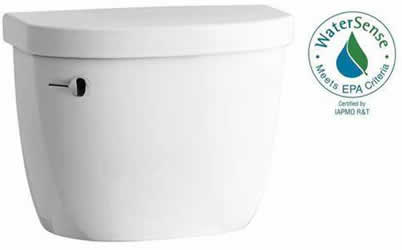
美国加州采用了美国国内最严格的节水标准之一:在加州,任何一个家庭住宅内的座便器每次冲水量不得超过1.28加仑(4.8公升)。根据这一法律,小便器每次冲水量不得超过0.125加仑(0.47公升),厨房水龙头每分钟水流量不得超过1.8加仑(6.8公升)。
California adopted one of the strictest water-saving standards in the country: No residential toilet in the state can flush more than 1.28 gallons of water at a time. Under this law, no urinal can use more than 0.125 gallons in a single flush flush, and kitchen faucets must use no more than 1.8 gallons of water a minute.
……现在的我们!
... AND HERE WE ARE NOW!
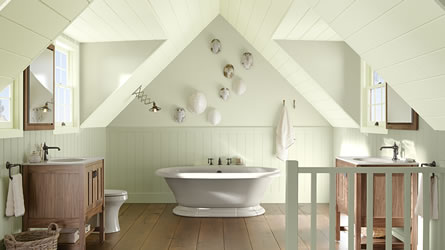
从人类文明起源开始,给排水系统发生了巨大的变化。曾经洗澡和上厕所都是奢侈的享受,都需要花费很多时间和精力。现在,你只需要走几步到你的浴室,在不到30分钟内既可以上厕所,又可以洗澡。现在,卫生和卫生服务是我们认为理所当然的日常必需品。 但是,下一次当你倒满一杯饮用水,或冲刷座便器时,回顾一下我们的浴室固定装置和下水道系统曾经经历多么长远的路:从地面上的一个简单的孔洞,直到现在我们发明的精心设计的全市给排水系统和先进的设备装置,我们的生活更健康、更轻松、更舒适、更愉快。
Plumbing has evolved dramatically since the dawn of civilization. At one time, showering and using a toilet were luxuries that took lots of time and effort. Now you can walk just a few feet to your bathroom to do both in less than 30 minutes. Hygiene and sanitation services are necessities we often take for granted. But the next time you fill a cup with drinking water or fluch the toilet, think of how far our bathroom fixtures and sewers have come: From a simple hole in the ground, we’ve developed elaborate citywide systems and sophisticated devices that make our lives healthier, easier, more comfortable, and much more pleasant.
